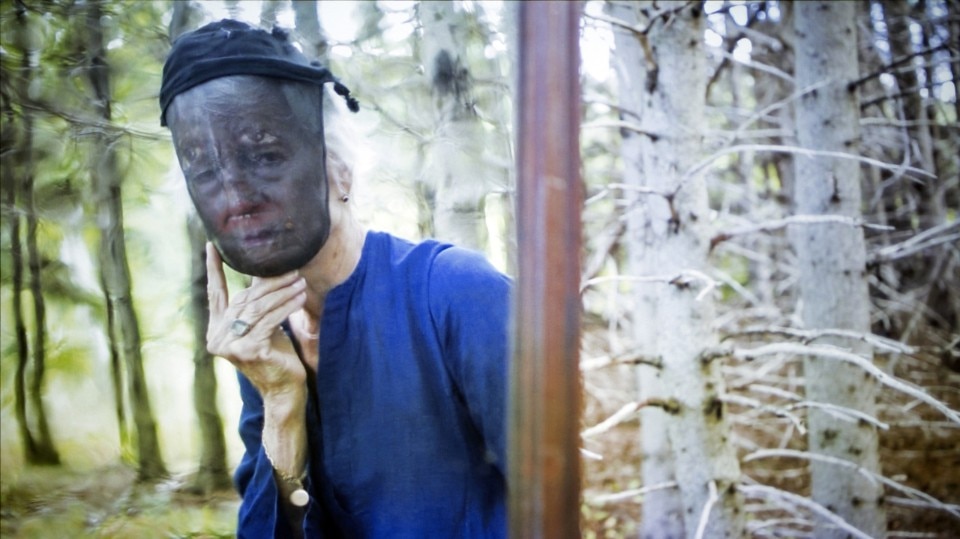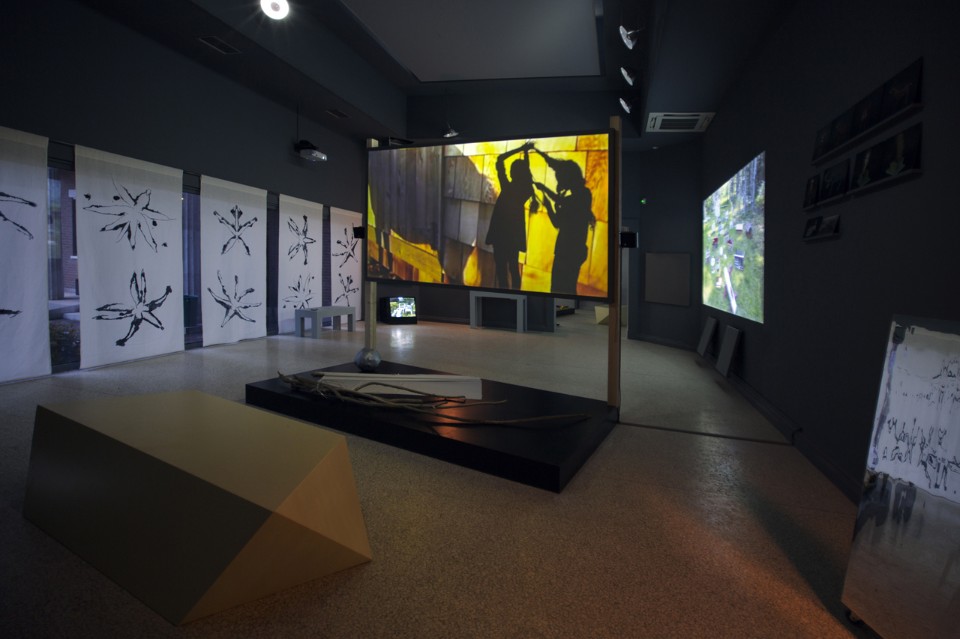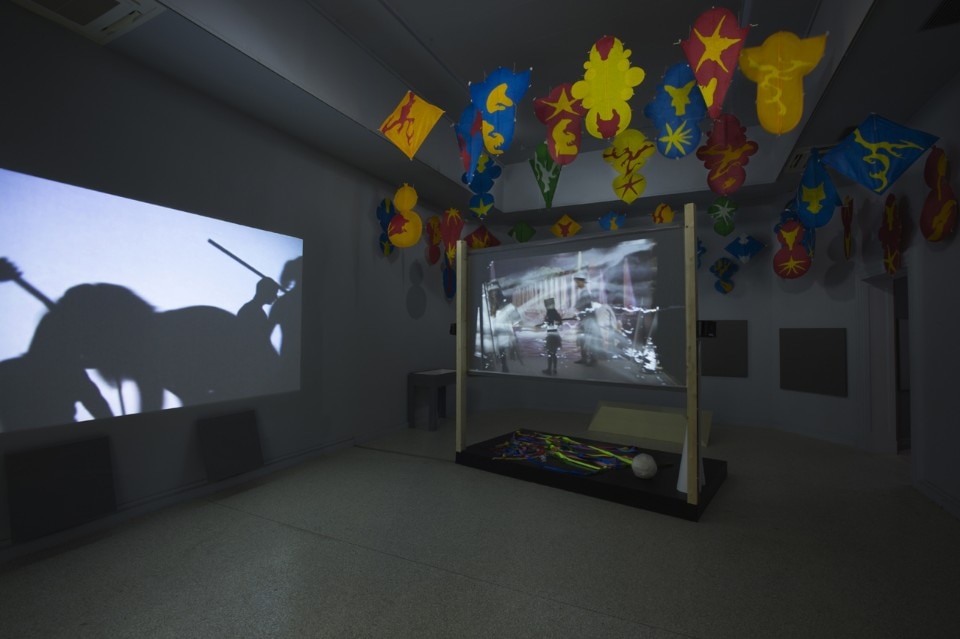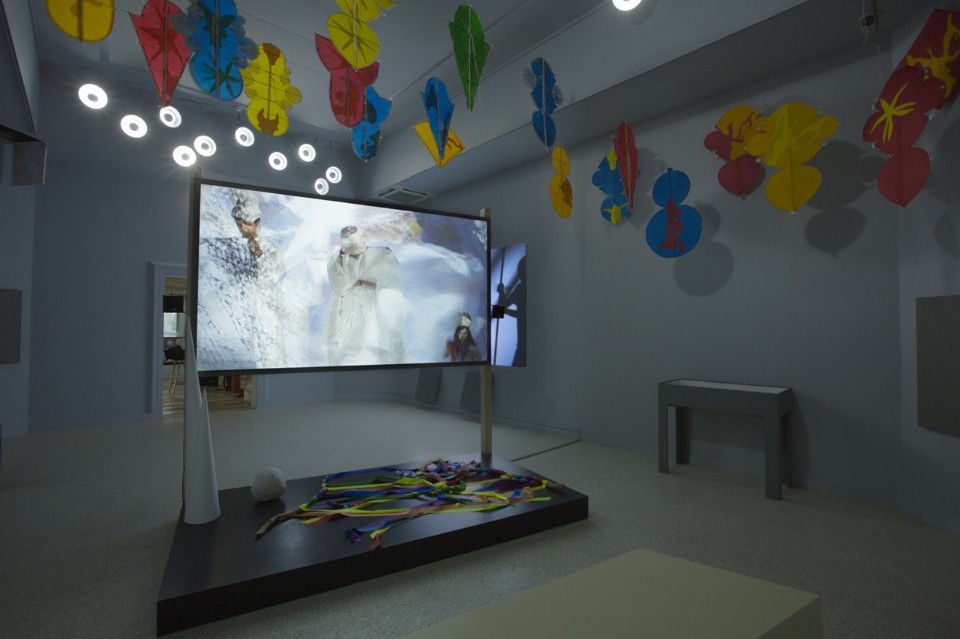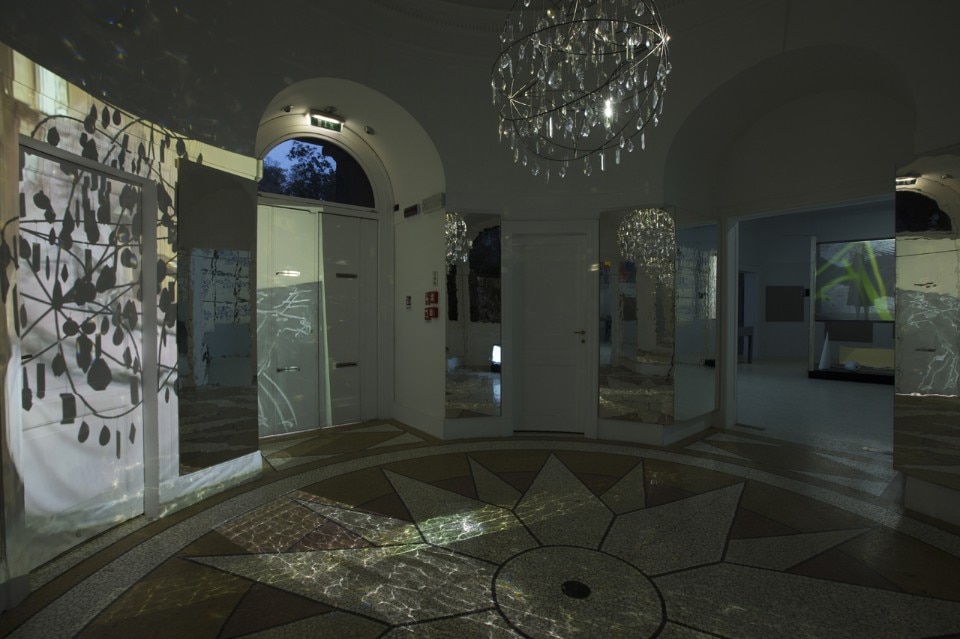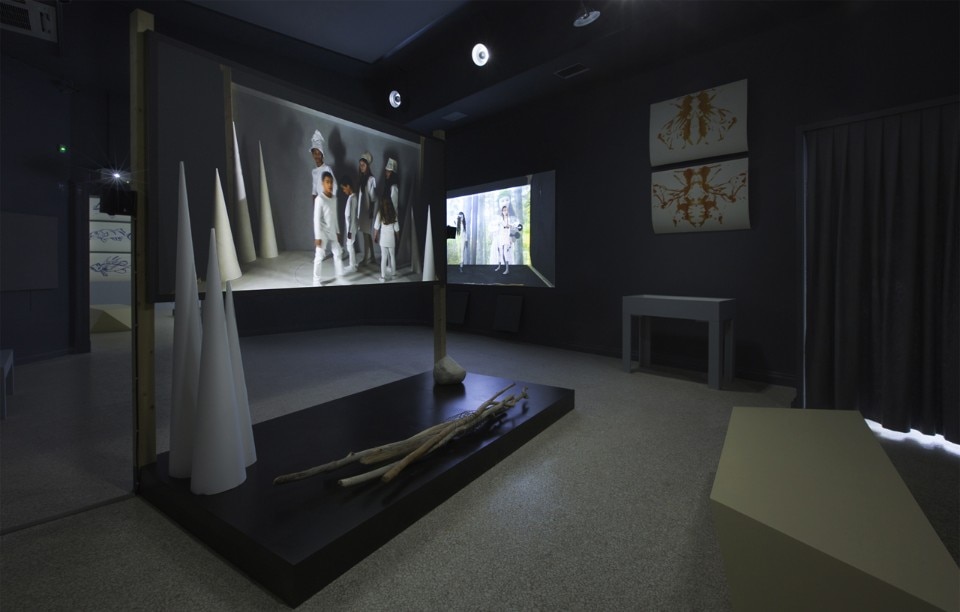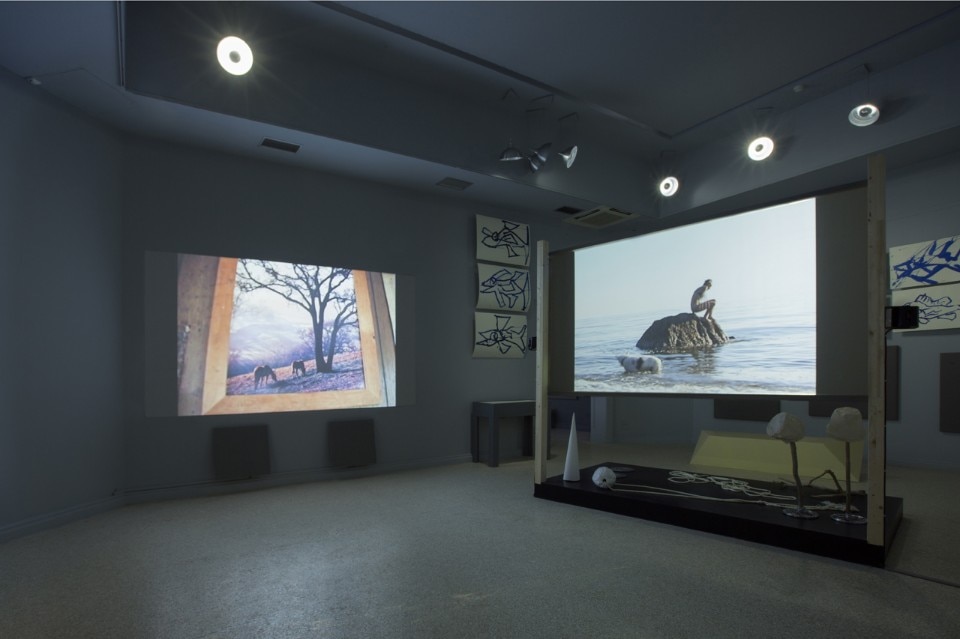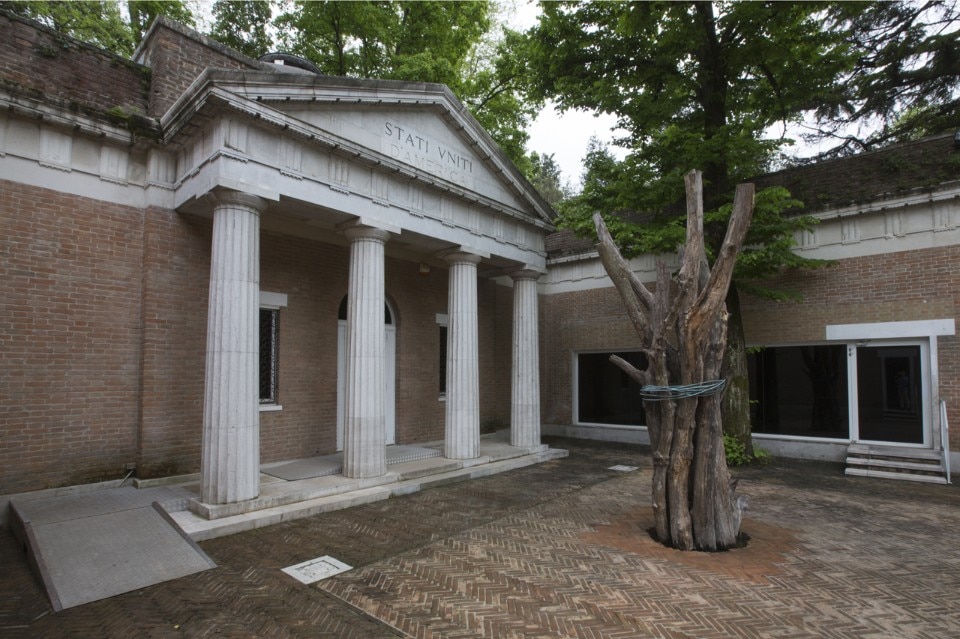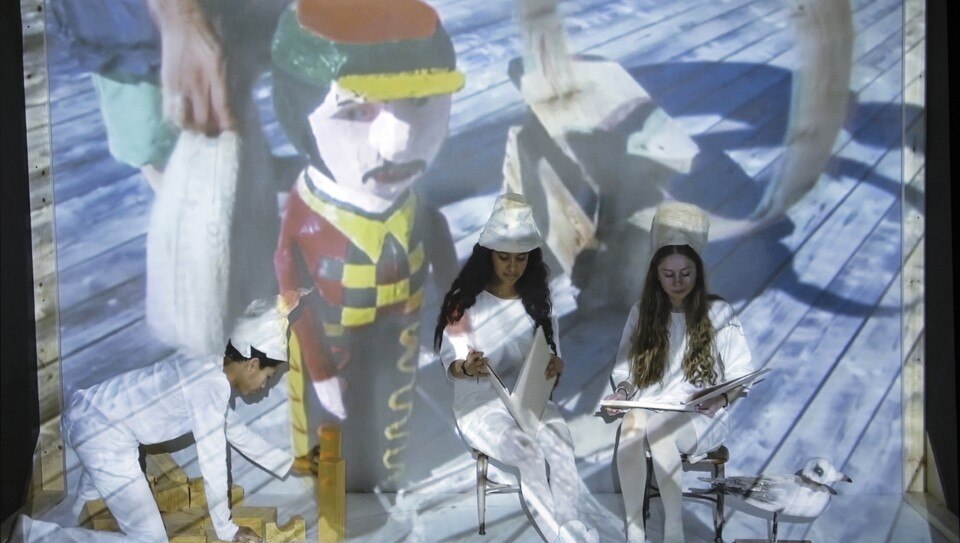
Like a Penelope in her own sphere, she weaves her past and present together, rereading them and giving them a new form. The video narration intertwines the ghosts of the tales Jonas discovered in Nova Scotia, where the videos were filmed. Ghosts, she says, are everywhere, the past and memory beckoning to us as evanescent but never scary figures.
The ghosts are children dressed in white, conjuring up images of spectres beneath sheets. Over a number of Saturdays, she and the children met up in New York for a specially organised workshop, where more of the images composing this multiple narration were filmed. The presence of children unveils the feminine approach but, more importantly, also epitomises the collective conscience and hope. Indeed, if there is one flaw in the curator’s beautiful exhibition it is that, yes, it is harsh, serious and sometimes surprising but it also appears to lack hope.

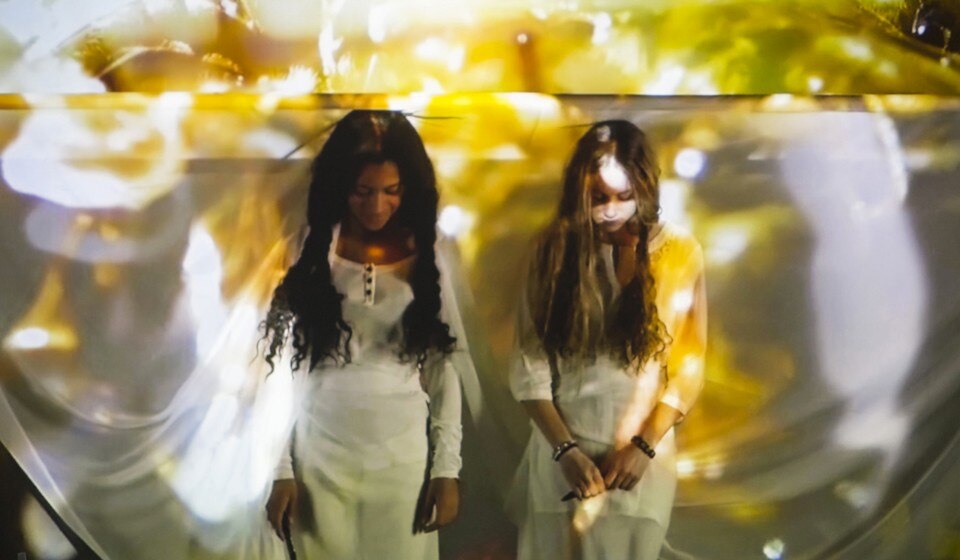
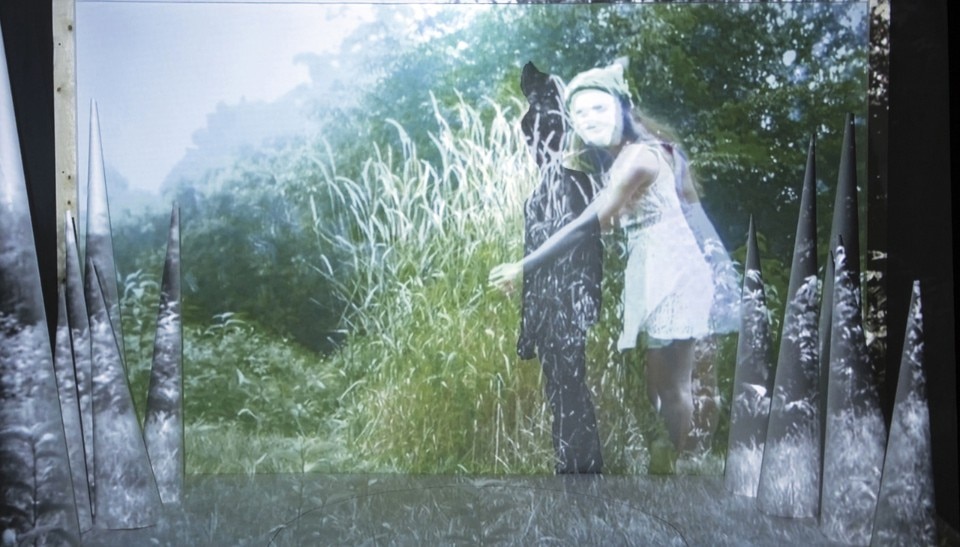
The Pavilion must be praised for offering a poetical political discourse. The old feminist mantra “the personal is political” here adopts an open form that speaks to all, investing us with responsibility for the earth, animals, our children and visual form.
The Jury of the Biennale agreed on the grace and wholeness of this Pavilion, awarding the Professor Emeritus of the MIT Program in Art, Culture and Technology (ACT) a special mention.
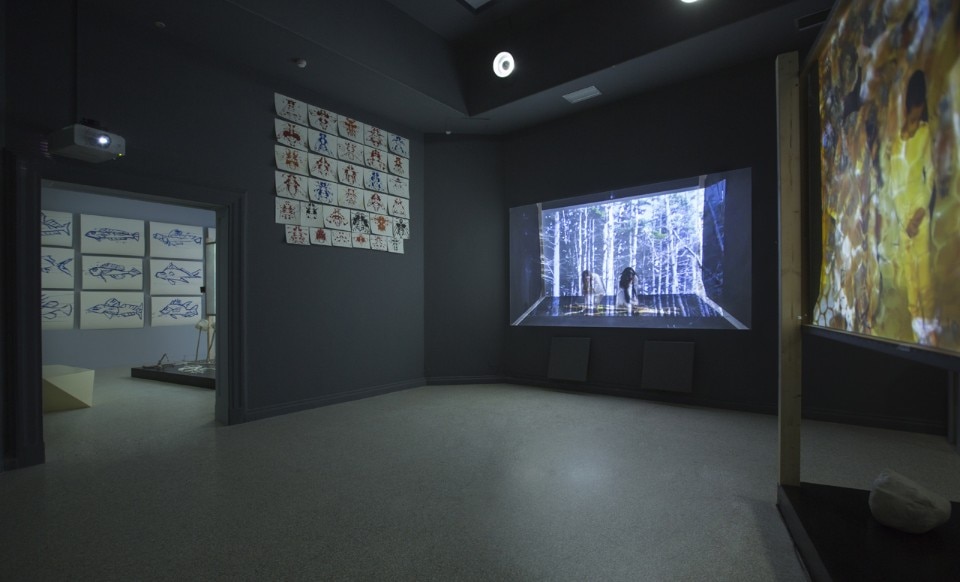
until 22 November 2015
Joan Jonas
They Come to Us without a Word
presented by MIT List Visual Arts Center
Commissioner and Co-Curator: Paul C. Ha, Dirctor of MIT List Visual Arts Center
Co-Curator: Ute Meta Bauer, Director of NTU Centre for Contemporary Art Singapore, Nanyang Technological University
Pavilion of the United States
Giardini della Biennale, Venice
20, 21, 22 July 9.00 p.m.
performance
They Come to Us without a Word II
Teatro Piccolo Arsenale


